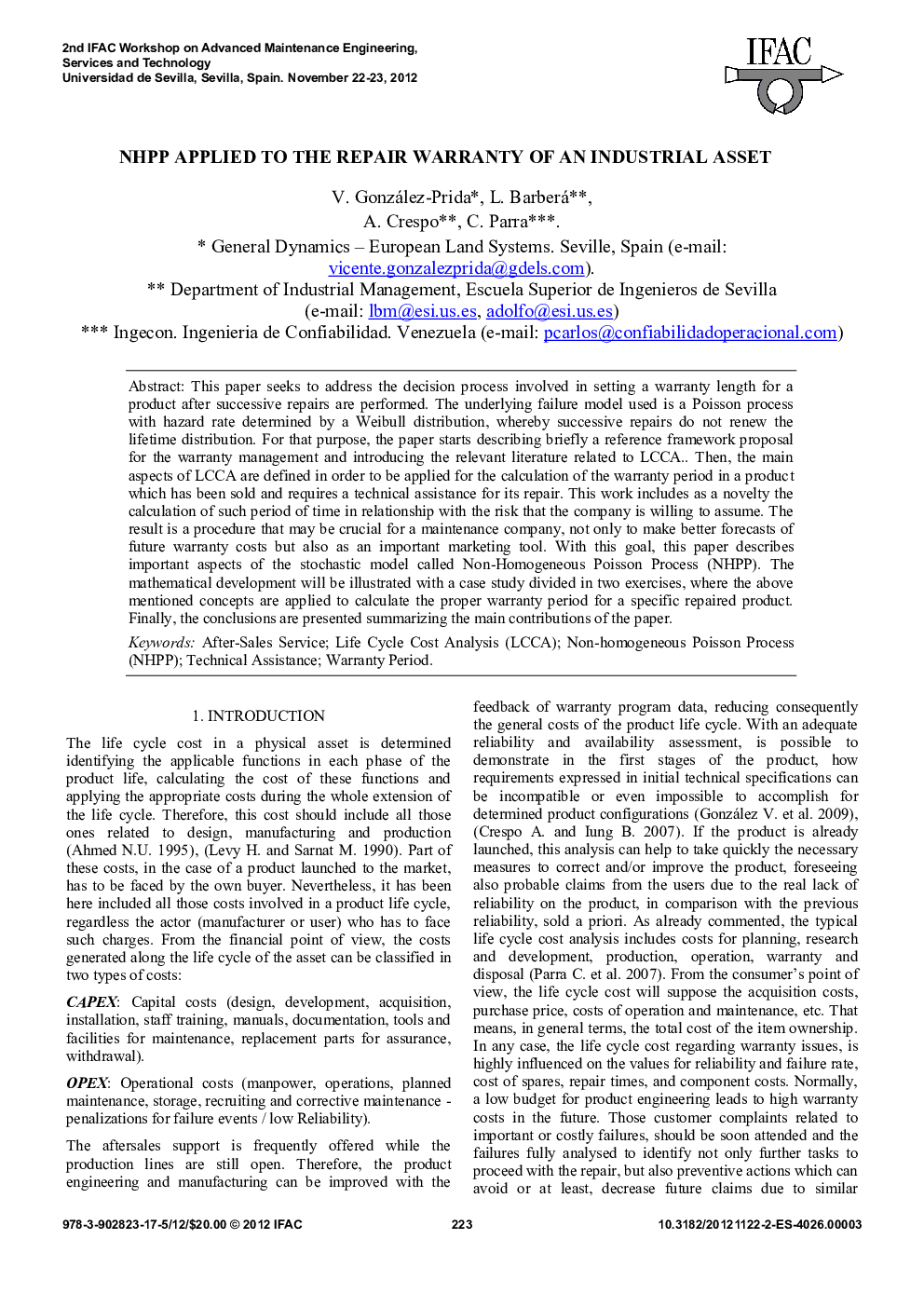| Article ID | Journal | Published Year | Pages | File Type |
|---|---|---|---|---|
| 715845 | IFAC Proceedings Volumes | 2012 | 5 Pages |
This paper seeks to address the decision process involved in setting a warranty length for a product after successive repairs are performed. The underlying failure model used is a Poisson process with hazard rate determined by a Weibull distribution, whereby successive repairs do not renew the lifetime distribution. For that purpose, the paper starts describing briefly a reference framework proposal for the warranty management and introducing the relevant literature related to LCCA. Then, the main aspects of LCCA are defined in order to be applied for the calculation of the warranty period in a product which has been sold and requires a technical assistance for its repair. This work includes as a novelty the calculation of such period of time in relationship with the risk that the company is willing to assume. The result is a procedure that may be crucial for a maintenance company, not only to make better forecasts of future warranty costs but also as an important marketing tool. With this goal, this paper describes important aspects of the stochastic model called Non-Homogeneous Poisson Process (NHPP). The mathematical development will be illustrated with a case study divided in two exercises, where the above mentioned concepts are applied to calculate the proper warranty period for a specific repaired product. Finally, the conclusions are presented summarizing the main contributions of the paper.
